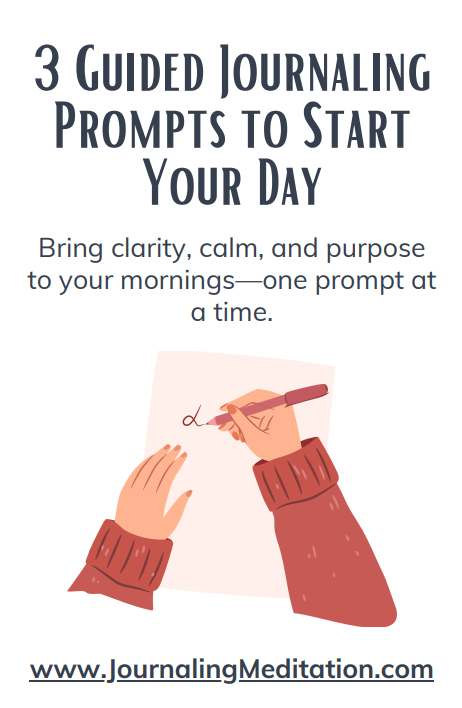Meditation has become a modern, popular wellness practice, praised for its many benefits—reducing stress, enhancing concentration, and fostering an overall sense of well-being. But there’s a special ingredient that can elevate your meditation from beneficial to transformative: mantras. In this guide, we’ll explore 8 free mantras for meditation, each a beacon to help guide you to deeper focus and relaxation.

(This post contains affiliate links. If you make a purchase through these links, I may earn a commission at no extra cost to you.)
What Are Mantras?
Before we dive into our list, let’s understand what a mantra is. Originating from ancient spiritual traditions, mantras are usually a word, sound, or phrase repeated during meditation to aid concentration and promote a calm state of mind. They serve as a focal point, helping to minimize distractions and deepen your meditation practice.
Why Use Mantras In Your Meditation?
Mantras are not just spiritual fluff; they’re powerful tools. By chanting or silently repeating a mantra, you can:
– Sharpen your focus and concentration, steering your mind away from daily distractions.
– Achieve deeper relaxation, as the rhythmic nature of a mantra can soothe the nervous system.
– Set a meaningful intention, connecting you to your meditation on a personal or spiritual level.
Preparing For Mantra Meditation
To get the most out of mantra meditation, find a quiet space where you won’t be disturbed. Sit comfortably, whether on a cushion on the floor or in a chair, with your back straight but not stiff. Set an intention for your practice, however simple or profound it may be.
8 Free Mantras For Meditation
Om or Aum
Arguably the most famous mantra, “Om” represents the sound of the universe. Its vibrations are believed to unify the individual with the cosmos. To use it, simply repeat “Om” with each exhale, feeling its resonance throughout your body.
So Hum (I Am That)
“So Hum,” meaning “I am that,” connects us to the universal consciousness. Inhale with “So,” and exhale with “Hum,” acknowledging your connection to all living beings.
Om Namah Shivaya (I Bow To Shiva)
This mantra pays homage to Shiva, the Hindu deity representing the inner self. Chant “Om Namah Shivaya” to honor your inner divinity and the interconnectedness of all things.
Om Mani Padme Hum (Praise To The Jewel In The Lotus)
Rooted in Tibetan Buddhism, this mantra symbolizes purity and enlightenment. Each syllable has spiritual significance, guiding practitioners on their path to liberation.
Om Shanti Shanti Shanti (Peace, Peace, Peace)
Invoke peace within yourself and the world around you with this simple but profound mantra. It’s especially poignant in times of turmoil or stress.
Sat Nam (I Am Truth)
“Sat Nam” is a profoundly simple yet powerful mantra from the Kundalini yoga tradition. It means “Truth is my identity.” Chanting this mantra encourages you to connect with your true self, beyond the ego and societal labels.
Hari Om (The Divine Vibration)
“Hari Om” is a mantra that refers to the divine vibration that removes all obstacles and negativity. It connects the practitioner with universal consciousness, promoting a sense of profound peace and harmony Brings peace, joy, and blessings to the person who chants it
I Am Peace/I Am Love/I Am Light
Affirmations can also serve as mantras. Repeat these phrases to embody the qualities of peace, love, and light in your meditation and daily life. Or make up your own.
Tips For Integrating Mantras Into Your Daily Practice
To effectively incorporate mantras into your meditation, consistency is key. Choose a regular time for your practice and consider pairing your mantra with breathing exercises for added focus. Keep a journal to note your experiences and any changes in your meditation or daily life.
Troubleshooting Common Challenges
If you find yourself struggling to connect with your chosen mantra or maintaining focus, don’t be discouraged. Experiment with different mantras, adjust your meditation environment, or modify the pace of your chanting. Remember, the path of meditation is personal and unique to each individual.
Have you experimented with any of these mantras in your meditation practice? Do certain phrases resonate more deeply with you than others? Share your experiences and tips in the comments below. Let’s cultivate a community of mindfulness and support each other on our meditation journeys.
Finally,
Mantras are a gateway to a more profound and connected meditation practice. Whether you’re a seasoned meditator or just starting, these 8 free mantras for meditation offer a path to deeper peace, focus, and spiritual connection. We encourage you to explore these mantras in your practice and discover their transformative power.
And as you journey through your meditation practice, remember that journalingmeditation.com is here as a resource. For further reading and tools on meditation and journaling, check out thewellnesssociety.org. Your path to mindfulness begins with a single mantra—embrace it.
FAQ’s
Embarking on a journey with mantras can transform your meditation practice, offering a bridge to deeper self-awareness and tranquility. As you explore into the world of mantras, you might find yourself wondering which ones to use, how to find your personal mantra, or curious about the most powerful mantras out there. Below, we address some of the most common questions to help you navigate your path.
What mantra should I use for meditation?
The choice of a mantra can be deeply personal and varies depending on your goals, interests, and spiritual leanings. Start with a mantra that resonates with you; it could be something as simple as “Om” for its universal vibrations or specific phrases that align with your intentions, such as “So Hum” for connecting with the universal consciousness.
How do I find my meditation mantra?
Finding your meditation mantra can be a journey of exploration. You might feel drawn to a particular mantra after reading about its meaning or hearing it in a meditation class. Experiment with different mantras during your practice to see which ones you connect with the most. Sometimes, a mantra finds you through a book, a teacher, or even during meditation. Trust your intuition.
What is the 5 word mantra meditation?
The 5-word mantra meditation refers to a specific practice involving a mantra comprised of five words. An example is “I am peace, love, light.” This mantra is designed to embody the principles of peace, love, and light within oneself, promoting a state of harmony and inner tranquility during meditation. Such mantras are powerful tools for focusing the mind and fostering an environment of self-healing and connection to the universe.
Which is the most powerful mantra in the world?
Determining the “most powerful” mantra is subjective and depends on individual beliefs and experiences. However, many consider the “Gayatri Mantra” to be one of the most powerful mantras in the world, revered across various cultures and spiritual traditions for its profound impact on mental clarity, enlightenment, and spiritual growth.
Can I create my own mantra for meditation?
Absolutely! Creating a personal mantra that holds special meaning to you can be incredibly powerful. Your mantra can be a word, sound, or phrase that inspires you, brings you peace, or reminds you of your intentions. The key is that it resonates with you on a deep level.
We hope these FAQs have shed light on some of the common queries about mantras in meditation. Now, we’re curious to hear from you—Have you tried using a mantra in your meditation practice? Share your experiences in the comments below!






